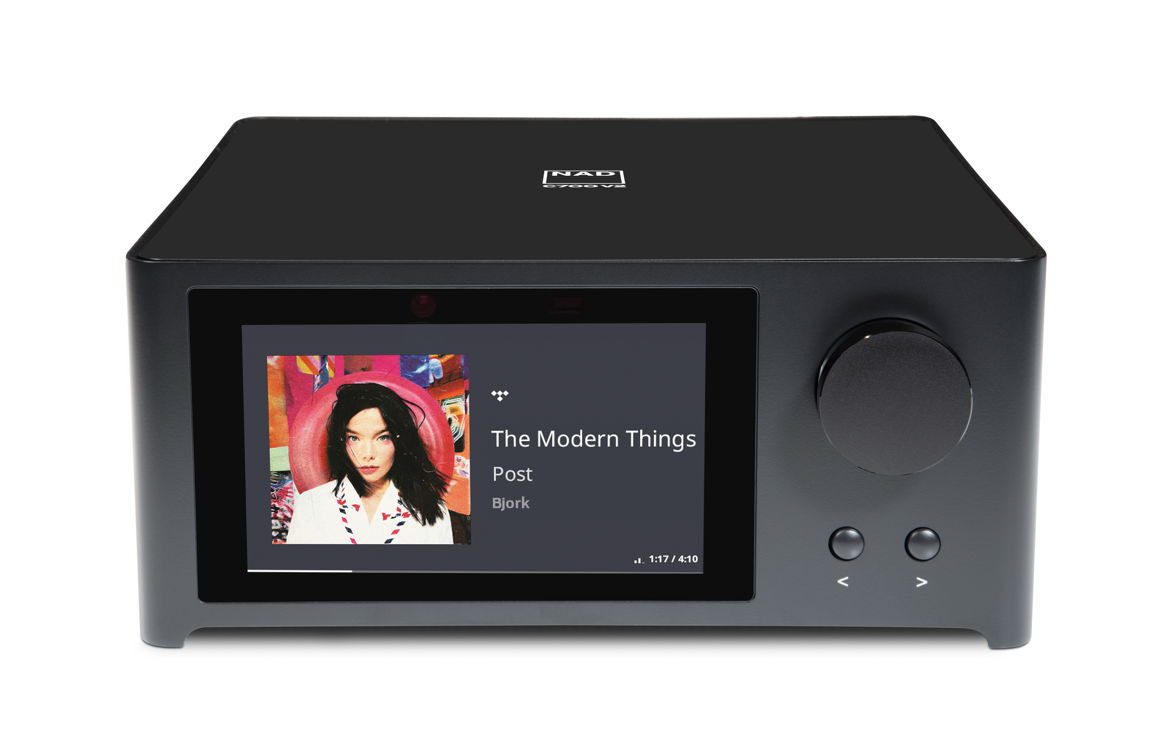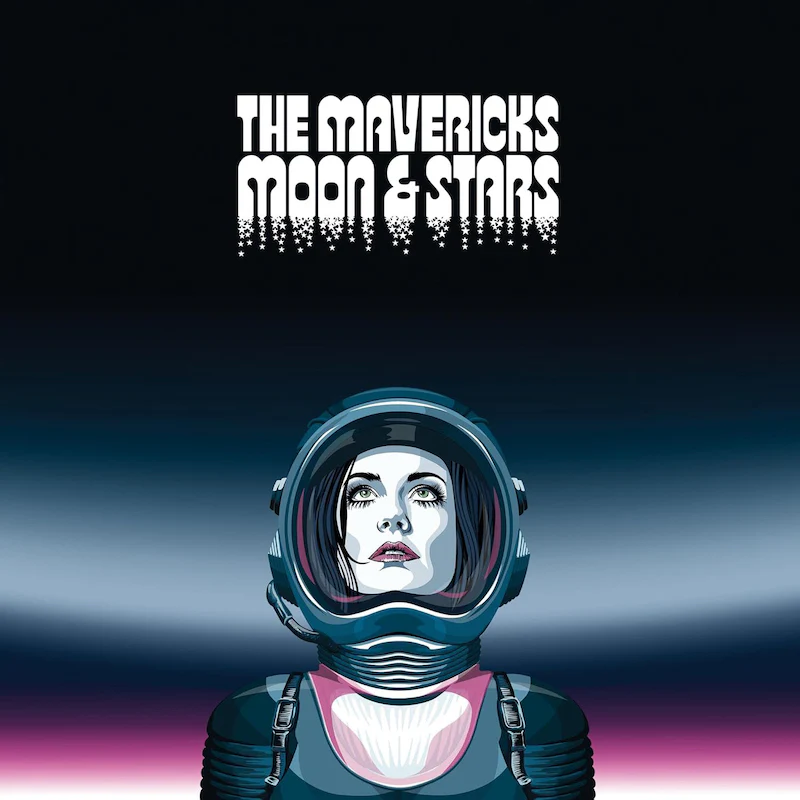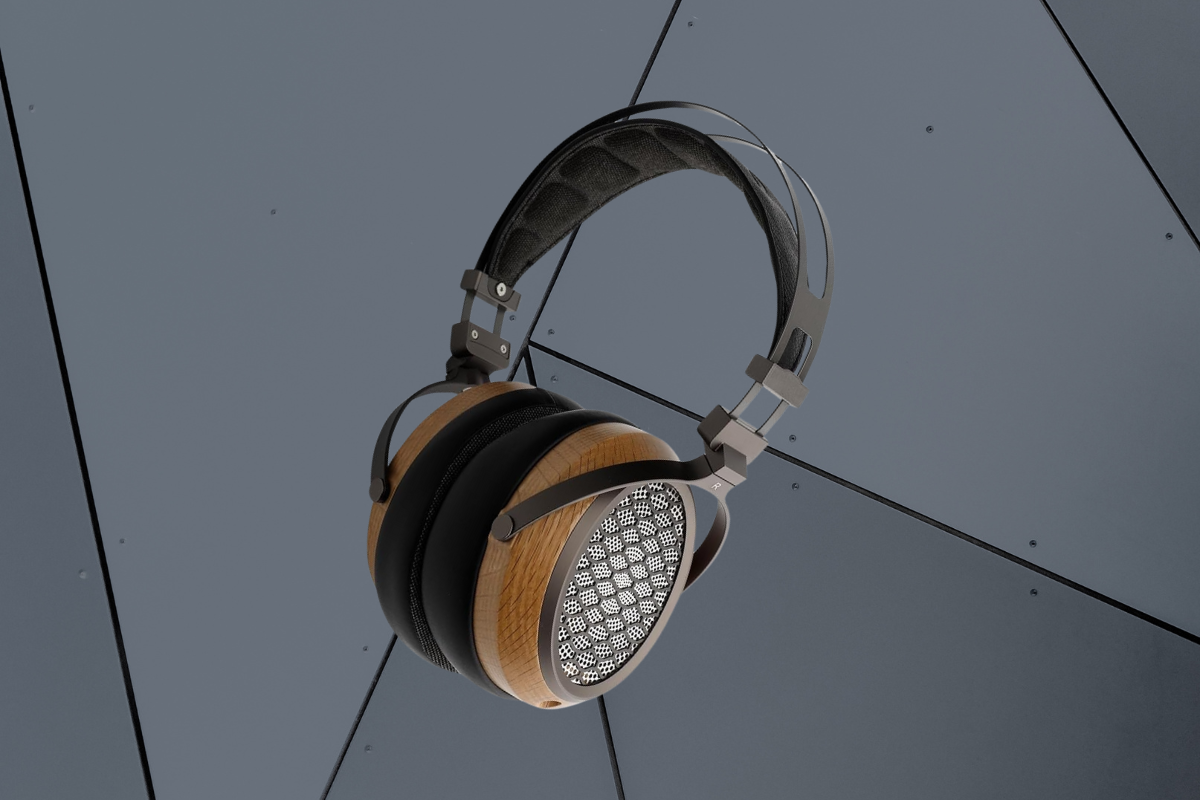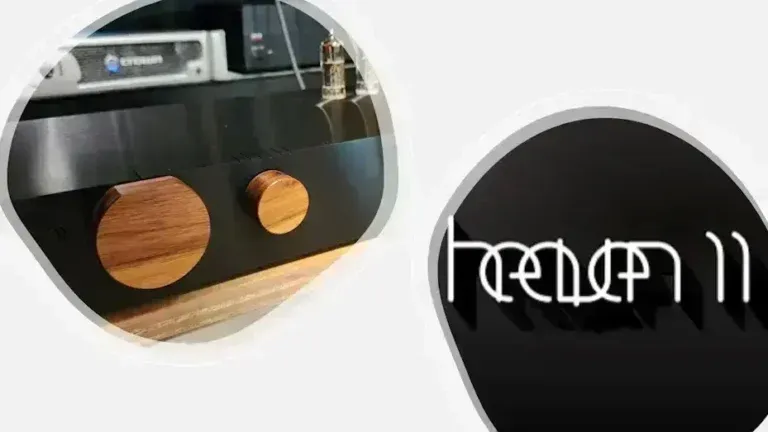
Short on time? Click here for our quick-access grid summary of the Denafrips Pontus II DAC.
The Pontus II stands out for its commitment to a technology known as R2R ladder DAC. This isn’t just a technical specification; it’s a choice that defines its character and performance. Our aim here is to unpack what this means for you as a listener. Will you notice a difference in your favorite tracks? How does it stack up against the ubiquitous delta-sigma DACs in many popular devices today?
We’ll be looking at the build and design of the Pontus II, which at first glance, shows a clear intention from Denafrips to create something robust and enduring. But a DAC is more than its metal casing; its soul lies in how it handles your music, from the deepest bass lines to the highest treble notes.
This review will take you through its performance, not just in technical terms, but in the practical sense. How does it handle different genres? What kind of setups does it shine in? And perhaps most crucially, does it justify its price tag in a market that has options for every budget and preference?
Denafrips Pontus II DAC Review: Navigating the Technical Terrain
As we embark on a detailed examination of the Denafrips Pontus II, it’s crucial to understand the landscape in which this DAC operates. The world of digital-to-analog converters is rich with technical innovation and fierce competition, where even the minutest details can significantly impact the listening experience.
The Heart of Pontus II: R2R Ladder DAC Technology
At the core of the Pontus II lies its R2R ladder DAC technology, a distinguishing feature that sets it apart from the sea of delta-sigma DACs dominating the market. The Resistor-to-Resistor (R2R) approach, revered for its ability to deliver more natural, less ‘processed’ sound, involves an array of precisely matched resistors to decode digital signals into analog. This method is known for its exceptional linearity and low noise floor, translating into a sound that many audiophiles describe as more organic and true to the original recording.
Denafrips takes this technology seriously, implementing it with an obsessive attention to detail. Each channel in the Pontus II is equipped with independent high-speed Field-Programmable Gate Arrays (FPGAs) to control the decoding. This setup ensures minimal linear error and speedy decoding, crucial for maintaining sound integrity and dynamics.
Design and Build: A Testament to Quality
Moving beyond its internal wizardry, the Pontus II’s exterior design and build quality are nothing short of impressive. The unit is encased in a substantial aluminum chassis, which not only gives it a premium feel but also plays a crucial role in shielding and vibration dampening – key factors in maintaining sound quality. The lack of visible screws or bolts on the top or sides enhances its sleek, uninterrupted aesthetic.
Weighing in at a hefty 18 pounds, the Pontus II feels solid and durable, a physical embodiment of the quality Denafrips aims to deliver in every aspect of its construction. This sense of solidity isn’t just cosmetic; it speaks to the care put into every component’s selection and assembly, from the oversized transformers to the high-quality connectors.

Connectivity and Compatibility: Ready for Any Setup
In terms of connectivity, the Pontus II is well-equipped to handle a variety of digital sources. It offers an array of inputs including AES/EBU, coaxial, BNC, and USB, catering to both traditional and modern setups. This flexibility is a nod to the diverse needs of audiophiles who might be integrating the DAC into systems ranging from vintage turntables to state-of-the-art streaming setups.
Compatibility-wise, the Pontus II is versatile. It supports a wide range of sampling rates, up to 24bit/1536kHz for PCM and DSD1024 for DSD via USB, covering the needs of high-resolution audio enthusiasts. This wide range ensures that the DAC can handle virtually any digital file format thrown at it, from standard CD-quality tracks to ultra-high-resolution recordings.
Performance Analysis: Dissecting the Sonic Attributes
Having established the technical prowess and versatile connectivity of the Denafrips Pontus II, it’s time to dive into the heart of the matter – its performance. The true measure of a DAC lies in its ability to breathe life into the music, maintaining fidelity to the original recording while imparting its unique character.
Soundstage and Imaging: A Spacious Musical Canvas
One of the most striking features of the Pontus II is its expansive soundstage. It doesn’t just play music; it crafts an auditory landscape. When testing with well-recorded tracks, the DAC demonstrates an impressive ability to spread the sound across a wide and deep stage, allowing each instrument and voice to occupy its distinct space. This separation is crucial for complex arrangements, where lesser DACs might muddle individual elements.
Imaging, too, is a strong suit for the Pontus II. Instruments are not only separated across the soundstage, but also placed with pinpoint precision. This accuracy in imaging brings a three-dimensional quality to the listening experience, where one can almost visualize the position of each element in the recording. It’s akin to having a personal concert where each performer has their designated spot, from the front-and-center vocalist to the subtly placed strings in the background.
Detail Retrieval: Unearthing the Subtleties
Detail retrieval is another area where the Pontus II shines. It digs deep into recordings, unveiling nuances and subtleties that might go unnoticed with lesser equipment. The texture of a plucked guitar string, the breathy quality of a saxophone, or the faintest echo in a vocal track are rendered with clarity and precision. This level of detail doesn’t come at the cost of harshness or digital glare; rather, it’s presented organically, as part of a cohesive whole.

Bass Response: Controlled and Articulate
Bass response in the Pontus II is noteworthy for its control and articulation. Rather than an overpowering or boomy low end, what we get is a nuanced bass that complements the overall musicality. The DAC handles bass lines with agility and precision, providing a solid foundation for the music without overshadowing other frequencies. This controlled approach to bass ensures that tracks are balanced and true to the artist’s intent, whether it’s the delicate strings of a classical piece or the pulsating bass of an electronic track.
Midrange and Highs: Natural and Smooth
The midrange of the Pontus II, often considered the heart of the sound, is rendered with natural warmth and presence. Vocals, in particular, are a standout, delivered with a richness and emotional resonance that can be genuinely moving. This is not to say that the midrange is overly colored; rather, it strikes a balance that is both engaging and accurate.
High frequencies are handled with a deft touch, avoiding any semblance of sibilance or artificial brightness. There’s a smoothness to the highs that lends itself well to long listening sessions. Cymbal crashes, high-pitched vocals, and other treble-intensive sounds are crisp and detailed, yet free from fatigue-inducing harshness.
Versatility Across Genres: A Broad Musical Palette
In testing the Pontus II across various genres, its versatility becomes apparent. From the intricate layers of a symphonic piece to the raw energy of a rock album, the DAC displays an adeptness at handling diverse musical styles. It doesn’t favor one genre over another; instead, it adapts, providing the necessary dynamism, subtlety, or power required by the recording.

Dynamic Range and Transient Response
A key aspect of any DAC’s performance is its ability to handle the dynamic range. The Pontus II excels in this area, effortlessly navigating the subtle nuances between the softest and loudest sections of a track. This dynamic prowess is particularly noticeable in live recordings and classical pieces, where the range between the quietest whisper and the crescendo is vast. The DAC’s transient response is equally impressive, with a quick and precise reaction to sudden changes in sound. Fast-paced genres like jazz and electronica benefit significantly from this, as the snap of a drum or the quick pluck of a bass string is rendered with lifelike immediacy.
Timbre and Tonal Accuracy
The Pontus II shows a remarkable fidelity to natural tones and timbres. Its ability to accurately reproduce the sound of different instruments is noteworthy. Pianos resonate with the right mix of warmth and clarity, strings carry a lush and full-bodied tone, and brass instruments have a brightness without veering into shrillness. This accuracy makes the Pontus II a joy for listening to acoustic and orchestral music, where the authentic reproduction of each instrument contributes to a rich and immersive experience.
Digital Filters and Sound Customization
The Pontus II offers a degree of sound customization through its digital filters. These filters allow listeners to subtly tweak the sound according to their preferences or to suit different types of recordings. While some audiophiles may prefer the uncolored and unaltered presentation of the default setting, others might find these filters useful for fine-tuning the listening experience, especially when dealing with recordings of varying quality.
Compatibility and Synergy with Other Equipment
A crucial consideration for any DAC is how well it pairs with other components in an audio system. The Pontus II shows a remarkable versatility in this regard. Its neutral yet musically engaging sound signature allows it to pair well with a wide range of amplifiers and speakers, from warm tube amps to more analytical solid-state models. Its ability to reveal the subtle nuances of music makes it a worthy companion to high-quality speakers, where its detailed rendering can be fully appreciated.
User Interface and Ease of Use
In terms of user interface, the Pontus II keeps things straightforward and functional. The absence of a remote control and a minimalistic front panel might seem underwhelming to those accustomed to more interactive interfaces. However, the simplicity of its design means fewer distractions from the primary task – enjoying music. The display is clear and informative, providing essential information at a glance.
Build Quality and Aesthetics
We touched on the build quality earlier, but it’s worth reiterating just how well-constructed the Pontus II is. The robust aluminum chassis not only provides an effective shield against electronic interference but also adds a premium feel to the DAC. Aesthetically, its understated design allows it to blend seamlessly into a variety of setups, from the modern minimalist to the classic audiophile rig.

Price-to-Performance Ratio
Considering its performance, build quality, and the level of detail it reveals in music, the Pontus II presents a compelling value proposition. It competes favorably with DACs in higher price brackets, making it an attractive option for those who seek high-end sound quality without venturing into the realm of diminishing returns.
Longevity and Future-Proofing
In terms of future-proofing, the Pontus II stands on solid ground. Its support for a wide range of file formats and high-resolution audio, coupled with its timeless design and robust build, suggests a device that will remain relevant and performant for years to come.
Final Verdict and Recommendations
To conclude, the Denafrips Pontus II is a DAC that impresses with its detailed, dynamic, and tonally rich sound. It’s a fit for audiophiles who value accuracy and naturalness in music reproduction. Whether it’s part of a high-end setup or a more modest system, its performance is consistently high. For those seeking to upgrade their digital audio experience, the Pontus II comes highly recommended, promising to breathe new life into your music collection.
| Feature | Description/Details |
|---|---|
| DAC Technology | Resistor-to-Resistor (R2R) Ladder DAC |
| Signal Processing | Independent high-speed FPGA for each channel with 0.01% precision resistor arrays. |
| Sampling Rate Support | PCM up to 24bit/1536kHz, DSD up to DSD1024 via USB. |
| Inputs | AES/EBU, Coaxial, BNC, USB. |
| Output Voltage | 2.5Vrms (RCA), 5Vrms (XLR). |
| Digital Filters | Customizable filters with settings for oversampling and sound tailoring. |
| Frequency Response | 20Hz – 70kHz (-3dB). |
| THD+N | <0.002%. |
| Dynamic Range | >120dB. |
| Build and Design | Robust aluminum chassis, sleek design, internal brackets, vibration dampening. |
| Weight | 18 pounds (8.2 kg). |
| Dimensions | Typically around 320mm x 330mm x 110mm (width x depth x height). |
| Soundstage and Imaging | Expansive soundstage with precise imaging; capable of rendering a three-dimensional auditory landscape. |
| Detail Retrieval | Excellent detail retrieval across frequency spectrum without harshness or digital glare. |
| Bass Response | Controlled, articulate, nuanced; well-balanced with other frequencies. |
| Midrange and Highs | Natural warmth in midrange; smooth and crisp high frequencies without sibilance or artificial brightness. |
| Dynamic Range and Transients | Effective handling of dynamic shifts; quick transient response for lifelike immediacy. |
| Timbre and Tonal Accuracy | Accurate reproduction of different instruments’ natural tones for lifelike listening. |
| Compatibility and Synergy | Compatible with a wide array of audio systems; pairs well with both tube and solid-state amplifiers. |
| User Interface and Controls | Minimalistic front panel with essential controls and an informative display. No remote control. |
| Build Quality and Aesthetics | High-quality connectors and components. Aesthetic design allows seamless integration into various setups. |
| Price (Approximate) | USD: $1,700, CAD: $2,150, EUR: €1,450. (Prices may vary based on region, taxes, and shipping costs) |
| Overall Recommendation | Suitable for audiophiles seeking a blend of technical accuracy and musical warmth. Ideal for diverse setups, from high-end to modest systems. |

















Leave a Reply